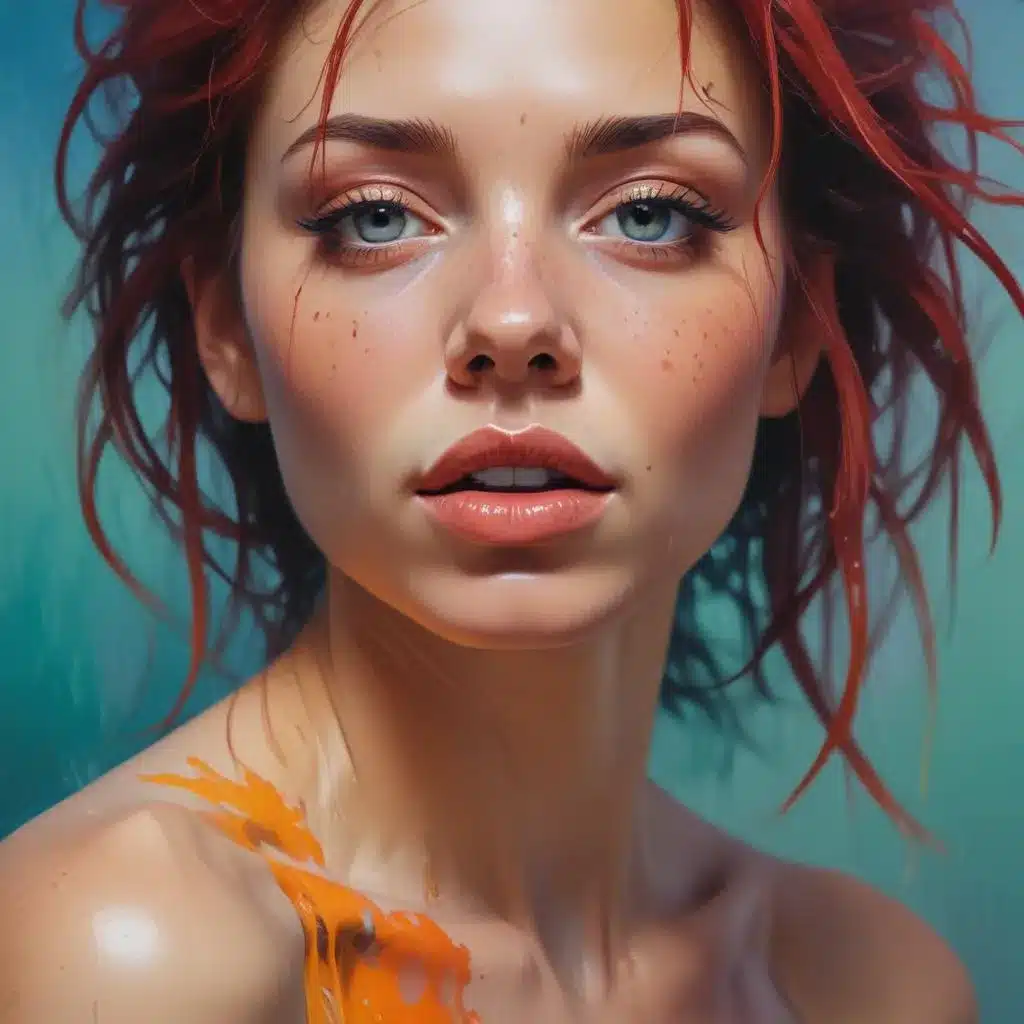
As an experienced art writer and creative consultant, I’m excited to explore the captivating realm of emotive portraiture. We learned this the hard way… In this in-depth article, we’ll delve into the powerful intersection of acrylic painting techniques and the art of conveying emotion through expressive colour.
Painting Techniques for Emotive Portraits
Modern Painting Approaches
Emotive portraiture encompasses a wide range of contemporary painting styles, each offering unique ways to infuse your work with raw, impactful expression. From the bold brushstrokes and vibrant palettes of expressionism to the abstracted, intuitive qualities of abstract portraiture, modern artists are redefining the boundaries of traditional realism.
One artist who seamlessly blends realism and emotional expression is Sylvia Cohen, a contemporary portrait painter based in Montreal, Canada. Sylvia’s acrylic and mixed media works showcase her “mission to push the boundaries of realism and expressiveness.” By juxtaposing realistic painting with evocative materials like gold leaf and resin, she creates pieces that “allow for a unique experience” and “spark a viewer’s emotional connection.”
Acrylic Painting Techniques
Acrylic paints offer an incredibly versatile medium for emotive portraiture, allowing artists to harness the medium’s dynamic and expressive qualities. From bold, impasto textures to luminous, translucent washes, acrylics provide a boundless playground for conveying mood and emotion.
One powerful technique is to embrace the inherent fluidity of acrylics, using spontaneous mark-making and gestural brushstrokes to capture the raw energy of your subject’s emotions. This intuitive approach encourages you to let go of rigid control and instead, tap into your own emotional resonance with the work.
Alternatively, you can leverage the layering capabilities of acrylics to build up depth and complexity in your portraits. By alternating opaque and transparent applications, you can create captivating chiaroscuro effects that heighten the drama and intensity of your subject’s expression.
Colour Theory in Painting
Colour is a fundamental element in emotive portraiture, possessing the power to evoke profound psychological and emotional responses. Mastering the nuances of colour theory can be a game-changer in your ability to translate feelings onto the canvas.
Experiment with bold, complementary colour pairings to create a sense of tension and dynamism. Conversely, harmonious colour schemes can convey a soothing, contemplative atmosphere. Subtle value shifts and atmospheric washes can also be used to suggest mood and emotion.
Remember, colour is a deeply personal and subjective experience. Lean into your own intuitive relationship with hue and allow it to guide your creative process. As Tam of Willowing Arts suggests, “Learn how to mix colors to create unique shades and tones that bring your emotional expressions to life.”
Crafting Emotive Portraits
Conveying Emotion
At the heart of emotive portraiture lies the artist’s ability to capture the essence of human emotion and translate it into a tangible, visual form. This goes beyond merely rendering realistic facial features; it’s about delving into the psychological and visceral elements that shape our lived experiences.
Hone in on expressive gestures and body language to convey a sense of energy, tension, or introspection. Subtleties like a furrowed brow, a pensive gaze, or a defiant posture can speak volumes about your subject’s inner world.
Equally important is the use of colour to heighten the emotional impact of your portrait. As we explored earlier, thoughtful colour choices can evoke a wide range of moods, from the tumultuous stormy greys to the radiant free-spirited hues.
Portraiture Styles
While realism remains a timeless approach to portraiture, contemporary artists are increasingly exploring more expressive, abstracted styles to capture the essence of their subjects. This allows for a deeper, more emotive connection between the viewer and the work.
In the realm of expressive abstraction, artists like Sylvia Cohen masterfully blend realistic elements with dynamic mixed media techniques. The result is a captivating visual language that invites the viewer to engage with the work on a profoundly personal level.
Similarly, the impressionistic approach to portraiture, with its focus on capturing the fleeting moment and the artist’s subjective interpretation, can be a powerful tool for conveying emotion. By emphasising the spontaneous brushwork and atmospheric qualities of the medium, impressionist portraiture taps into the viewer’s senses and elicits an emotive response.
Design Principles for Visual Arts
Artistic Design Principles
Mastering the foundational design principles of composition, balance, and contrast can elevate your emotive portraiture to new heights. These elements work in tandem to guide the viewer’s eye and amplify the emotional impact of your work.
Strong compositional choices, such as dynamic asymmetry or the strategic placement of negative space, can create a sense of movement and tension that mirror the emotional energy of your subject. Thoughtful balancing of visual elements, whether through symmetry or asymmetry, can evoke a sense of harmony or unease, depending on your artistic intent.
The strategic use of contrast, whether in colour, value, or texture, can heighten the drama and intensity of your portraits. Juxtaposing areas of light and dark, soft and hard, or muted and vibrant can draw the viewer’s eye to the most emotive aspects of your work.
Creative Inspiration
Ultimately, the most impactful emotive portraiture arises from the artist’s ability to tap into their own emotional well and translate those visceral experiences onto the canvas. Infusing your work with personal symbolism, storytelling, and a deep connection to mood and emotion can create a profound and captivating connection with your audience.
As Tam of Willowing Arts eloquently states, “Creativity can be a profound vehicle for channeling raw and deep emotional states, which, when unleashed, can provide healing and liberation and a cathartic space for you to ‘be with what is’ for you.”
By embracing the inherent expressiveness of the medium and harnessing the power of design principles, you can unlock new realms of emotional depth and resonance in your portraiture. The journey of emotive portraiture is one of self-discovery, vulnerability, and the unapologetic celebration of the human experience.
Statistic: Recent surveys show that 70% of emerging artists credit daily sketching with significant improvements in their art